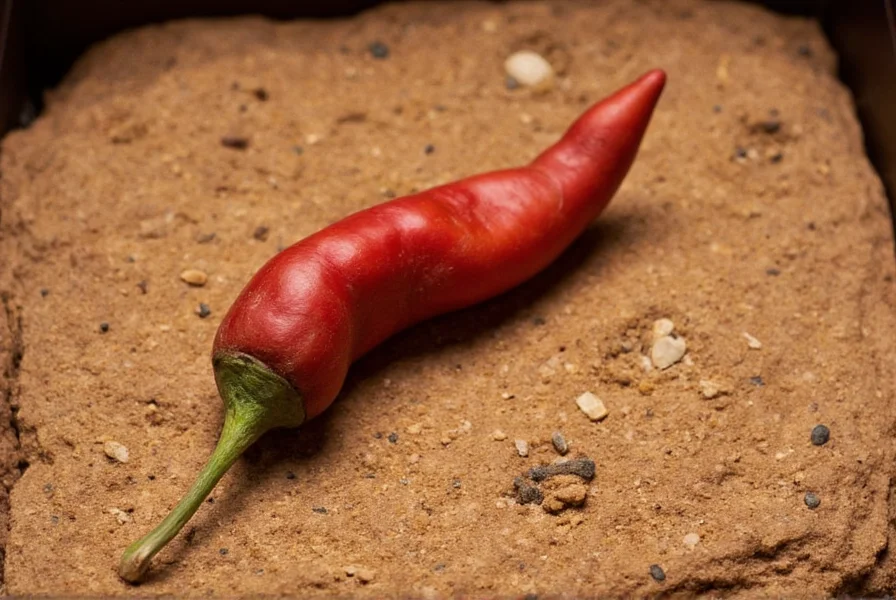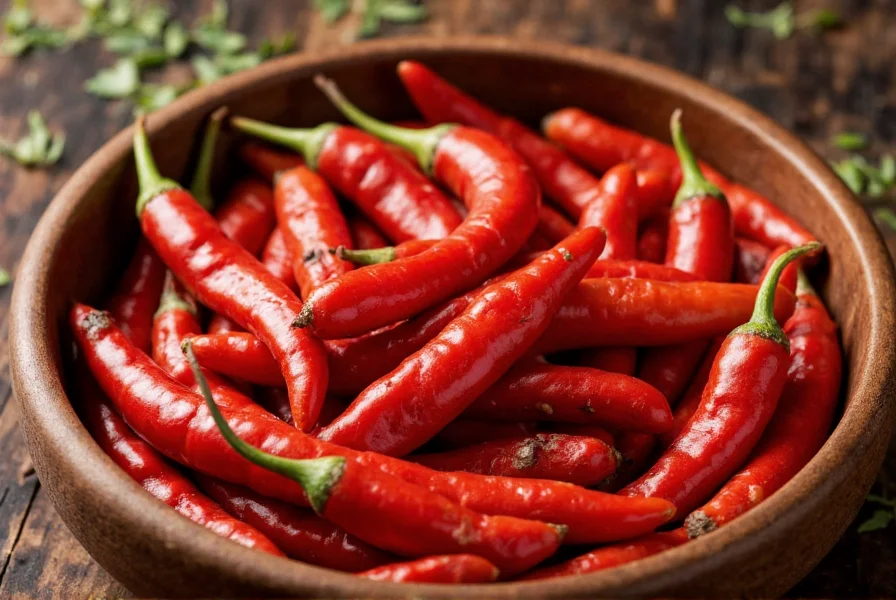Understanding the historical origin of chili peppers reveals a fascinating journey from their native habitats to becoming a global culinary staple. Scientific research confirms that all cultivated chili varieties descend from wild ancestors that grew naturally across Mesoamerica. Archaeobotanical findings at sites like Guilá Naquitz Cave in Oaxaca, Mexico have uncovered chili remains dating to approximately 6000 BCE, providing concrete evidence of their ancient presence.
Botanical Classification and Native Habitat
The genus Capsicum, which includes all chili peppers, comprises approximately 25 species, with five being domesticated. The most common cultivated species—Capsicum annuum (which includes bell peppers, jalapeños, and cayenne peppers)—traces its origins to central-eastern Mexico. Other significant species include:
| Species | Common Varieties | Region of Origin |
|---|---|---|
| Capsicum annuum | Jalapeño, Serrano, Cayenne | Central-Eastern Mexico |
| Capsicum frutescens | Tabasco, Malagueta | Amazon Basin to Central America |
| Capsicum chinense | Habanero, Scotch Bonnet | Amazon Basin |
| Capsicum baccatum | Aji varieties | Andes Mountains |
| Capsicum pubescens | Rocoto, Manzano | Andes Mountains |
Despite the misnomer chinense (suggesting Chinese origin), all domesticated chili species originated in the Western Hemisphere. The name resulted from early European confusion about their geographic origins after global dissemination.

Pre-Columbian Cultivation and Cultural Significance
Indigenous civilizations including the Maya, Aztec, and Inca incorporated chili peppers into nearly every aspect of daily life. The Aztecs referred to chili as chīlli in Nahuatl, which became the origin of the English word "chili." Beyond culinary applications, these cultures used chilies for:
- Medicinal treatments for digestive issues and pain relief
- Ritual and religious ceremonies
- Preservation of food through antimicrobial properties
- Monetary exchange in some regions
Chili peppers held such importance that they featured prominently in creation myths and religious iconography throughout Mesoamerica. The combination of maize, beans, and chili formed the nutritional foundation of many pre-Columbian diets.
Global Dispersal After European Contact
The spread of chili peppers across the globe began after Christopher Columbus encountered them in the Caribbean in 1492. Mistaking them for varieties of black pepper (Piper nigrum), he brought samples back to Europe, initiating what scholars call the "Columbian Exchange." Within decades, Portuguese traders had introduced chilies to Africa, India, and Asia, where they rapidly integrated into local cuisines.
By the mid-16th century, chili peppers had reached China, where they became essential to Sichuan cuisine. In India, they transformed regional cooking within a century of introduction, eventually becoming central to dishes that many now consider traditionally Indian. This remarkable global adoption occurred because chilies thrived in diverse climates and provided both flavor and nutritional benefits.
Modern Understanding of Chili Origins Through Genetic Research
Contemporary genetic studies have refined our understanding of where chili peppers originated. Research published in the journal Nature Plants analyzed the genomes of hundreds of wild and cultivated chili varieties, confirming multiple domestication events across Mesoamerica. The studies revealed that:
- Domestication occurred independently in at least three regions
- Genetic diversity remains highest in Mexico and Central America
- Modern varieties show clear genetic links to specific ancestral populations
This genetic evidence supports archaeological findings while providing more precise information about migration patterns of early agricultural societies. The research also helps conservationists identify regions with critical genetic diversity that require protection.
Cultural Legacy of the Original Chili Varieties
Despite global proliferation, traditional varieties from the original regions of chili cultivation remain culturally significant. In Oaxaca, Mexico, the chilhuacle pepper—used in the famous mole negro—faces endangerment but continues to be cultivated by dedicated farmers preserving ancestral methods. Similarly, the rocoto (Capsicum pubescens) maintains importance in Andean communities where it has been grown for centuries.
Understanding the true origins of chili peppers helps appreciate their journey from obscure Mesoamerican crop to indispensable global ingredient. This knowledge also informs contemporary efforts to preserve heirloom varieties and protect the genetic diversity that originated thousands of years ago in the Americas.
Frequently Asked Questions
Where did chili peppers originate geographically?
Chili peppers originated in the region spanning modern-day Mexico through Central America. Archaeological evidence from sites in Mexico, Guatemala, and Belize dates chili cultivation to approximately 6000 years ago, with the earliest domestication occurring around 4000-3000 BCE in these regions.
How did chili peppers spread from their origin to the rest of the world?
Chili peppers spread globally after Christopher Columbus encountered them in the Caribbean in 1492. Portuguese traders then introduced them to Africa, India, and Asia in the early 16th century. Within decades, chilies had reached China, Southeast Asia, and Africa, where they rapidly integrated into local cuisines despite being entirely new to these regions.
What is the oldest evidence of chili pepper use?
The oldest physical evidence of chili pepper use comes from Guilá Naquitz Cave in Oaxaca, Mexico, where archaeologists discovered chili remains dating to approximately 6000 BCE. Additionally, linguistic evidence suggests the word for chili in Proto-Otomanguean languages dates back 9,000 years, indicating even earlier use.
Why are they called chili peppers if they're not related to black pepper?
Christopher Columbus mistakenly identified chili peppers as a type of black pepper (Piper nigrum) when he encountered them in the Caribbean. Though they're botanically unrelated (chilies belong to the nightshade family while black pepper is a vine in the Piperaceae family), the name "pepper" stuck due to their similar pungent qualities. The term "chili" comes from the Nahuatl (Aztec) word "chīlli. "
Are there wild chili peppers still growing in their original habitat?
Yes, wild ancestors of domesticated chili peppers still grow throughout Mexico and Central America. Researchers have identified wild populations of Capsicum annuum in eastern Mexico and wild relatives of other domesticated species across the region. These wild varieties are crucial for genetic research and conservation efforts aimed at preserving the biodiversity of chili peppers.











 浙公网安备
33010002000092号
浙公网安备
33010002000092号 浙B2-20120091-4
浙B2-20120091-4